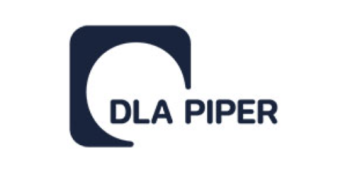Introduction
Licensing and reimbursement
Data protection
Product liability
Medical devices
Information to patients
The European Telecommunications Standards Institute recently held the E-health Workshop on Telemedicine. The workshop included a number of presentations on telemedicine projects(1) that have already been partially implemented or are expected to be implemented shortly. By 2016, the value of the electronic health ('e-health') market is expected to be €60 billion and the value of the telemedicine sector is expected to reach $27.3 billion. This update suggests the top five legal issues related to telemedicine and e-health.
Telemedicine is an information society service for the purposes of the EU E-commerce Directive, which:
- prescribes the 'country of origin' principle (ie, a telemedicine service provider shall comply only with the laws of its country of establishment); and
- prohibits member states that are different to the provider's country of origin from requiring the provider to obtain local authorisation before offering such services in their jurisdiction.
In relation to the reimbursement of telemedicine services, the EU Directive on Patients' Rights and Cross-Border Healthcare (2011/24/EC) provides the legal framework allowing patients to have telemedicine services reimbursed even if they were provided in a country different to their country of residence, provided that they fall within the scope of reimbursed services in their country of residence and (in some circumstances) that they obtained prior authorisation from their country of residence.
The reimbursement of telemedicine services was one of the topics covered in the recent Italian guidelines on telemedicine, which set out the criteria and authorisations required to obtain reimbursement of services in Italy. Such guidelines, and EU laws in general, raise issues as to whether telemedicine providers must obtain an additional local licence or authorisation if they want to target a jurisdiction rather than just assisting their patients when they move to a different EU member state. Similarly, the guidelines leave open the issue relating to the types of telemedicine service that are not listed as reimbursed services just because they are an innovation made possible as a consequence of the development of telemedicine services.
E-health raises a variety of data protection issues.(2) In addition, the security measures required by data protection laws – which, in the case of Italy, are extremely stringent – in order to protect personal data (eg, data stored in a cloud database) represent a major issue, breach of which can trigger relevant fines, especially in light of the upcoming EU Privacy Regulation.
The EU regulations on product liability are stringent and set out a regime of strict/objective liability – that is, in case of malfunction, patients must prove only the defect to support the claim for damages, and the burden of proof is on the manufacturer to prove that the damages were not caused by the alleged defect. The matter is even more complex in the case of telemedicine services, since an erroneous treatment might, for instance, be due to a delay in the communication of data by the telecommunications carrier, and therefore the data provided to doctors might not be fully reliable. This would increase the risk exposure for both doctors who rely on inaccurate data and manufacturers of telemedicine services whose liability might be linked to circumstances outside their control.
The qualification of a telemedicine apparatus is always a difficult task, and it should be assessed whether both software and hardware components are qualified as medical devices.(3) The consequence of such qualification is that, for instance, in case of any update or upgrade of software, a new approval process of the software as a medical device will be required, which will inevitably delay the development of such technologies. Finally, it should be assessed whether 'amusement' devices which can provide information about the medical conditions of their users have to be qualified as medical devices.
Since telemedicine services often rely on data generated by devices used by patients themselves, in order to make such data reliable and useful for the provision of treatments, the information and instructions provided to patients are crucial. This is one of the main topics covered by the Italian guidelines on telemedicine. The guidelines also prescribe instructions on the requirements to be met in terms of service levels between telemedicine providers and hospitals, as well as the ethical principles to be complied with. This is a topic that will become increasingly relevant in the coming months.
For further information on this topic please contact Giulio Coraggio at DLA Piper Italy by telephone (+39 02 80 61 81), fax (+39 02 80 61 82 01) or email([email protected]). The DLA Piper website can be accessed at www.dlapiper.com.
Endnotes
(1) The slides are available here.
(2) For further details please see "Remote patient monitoring systems: potential regulatory hurdles".
(3) For further details please see "Remote patient monitoring systems: potential regulatory hurdles".



